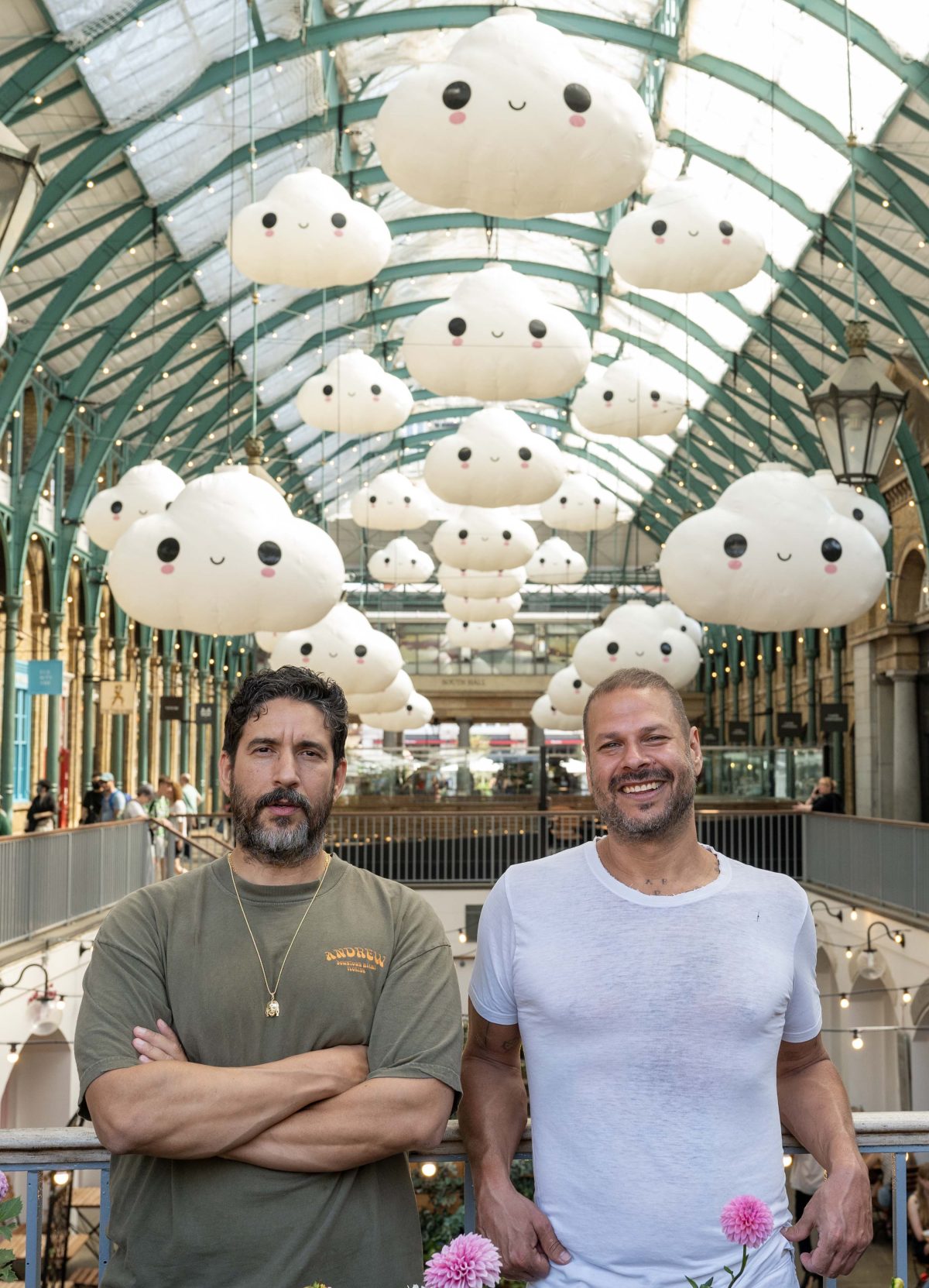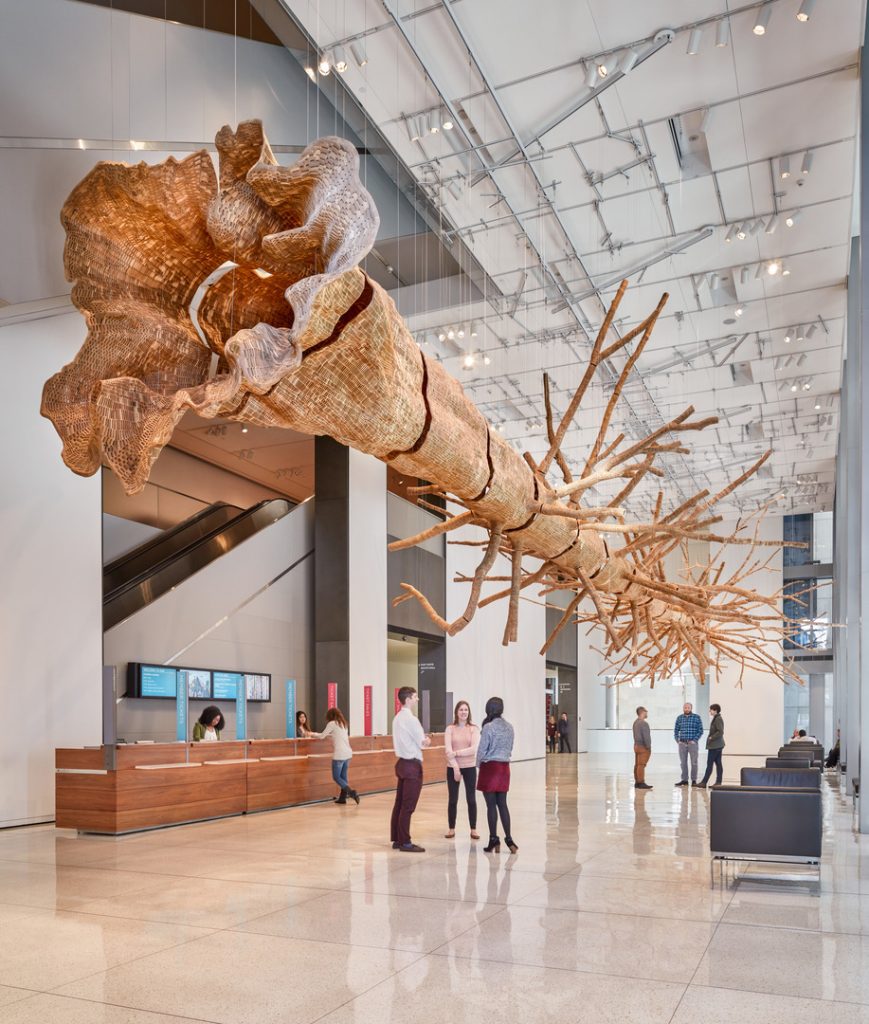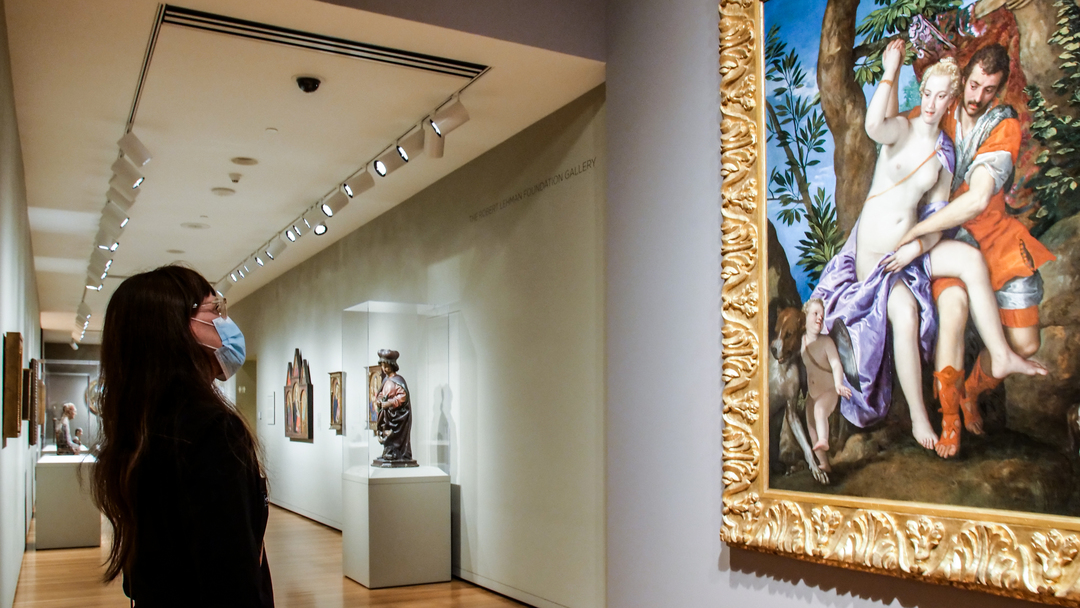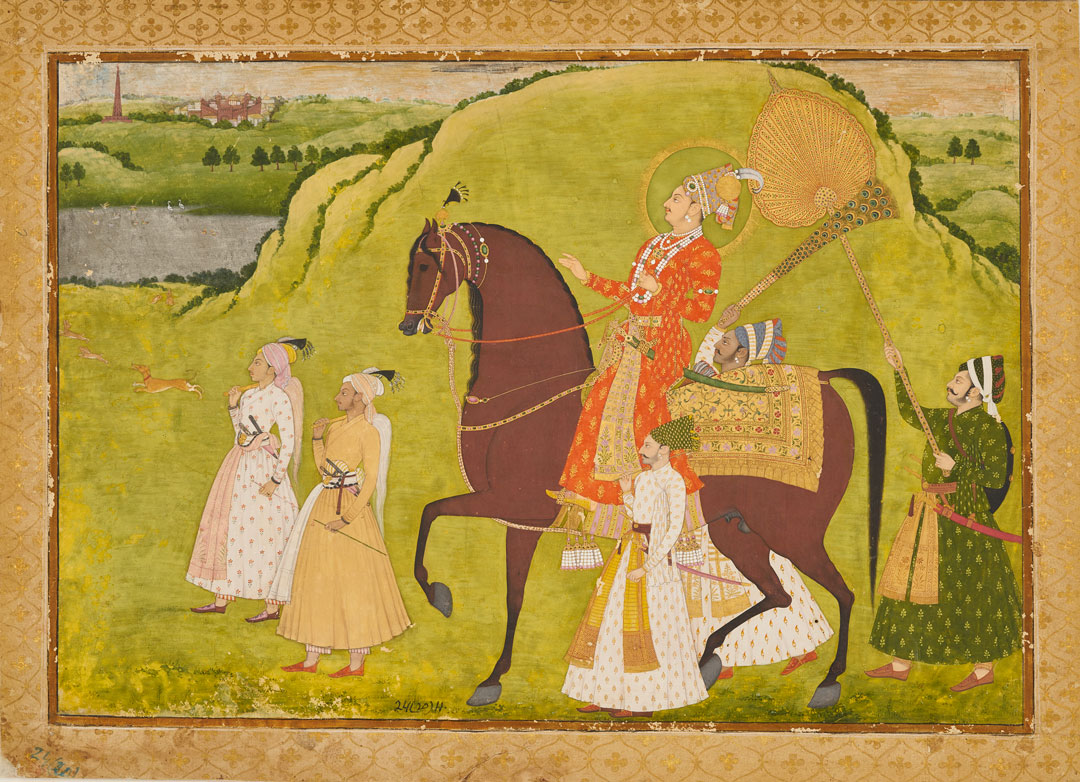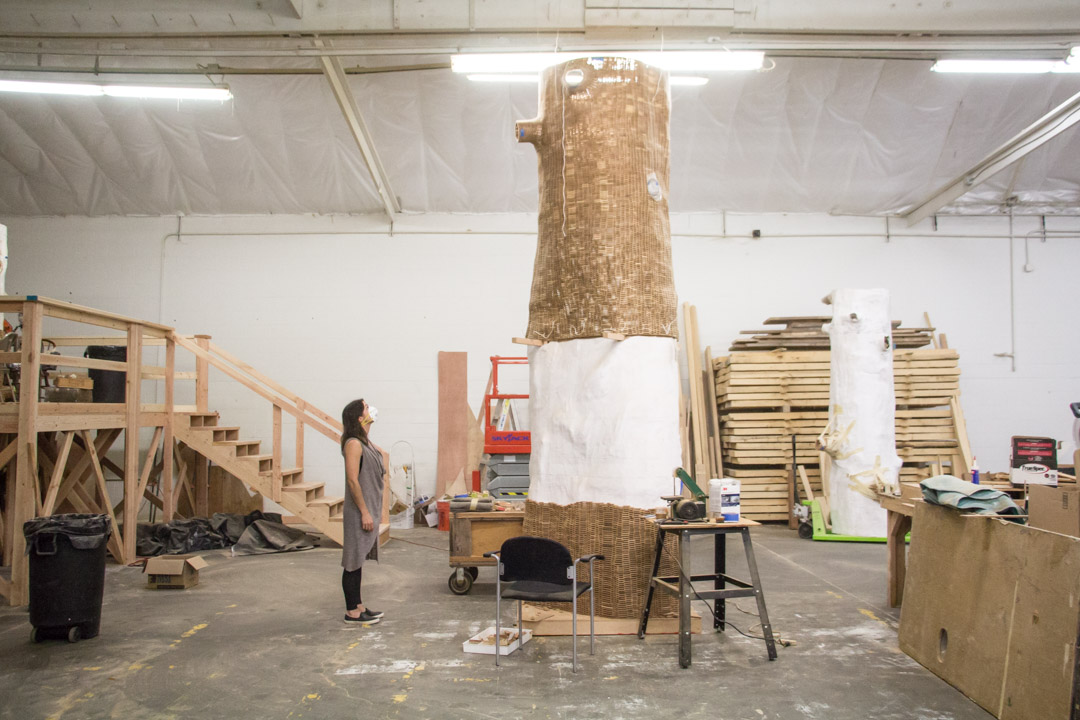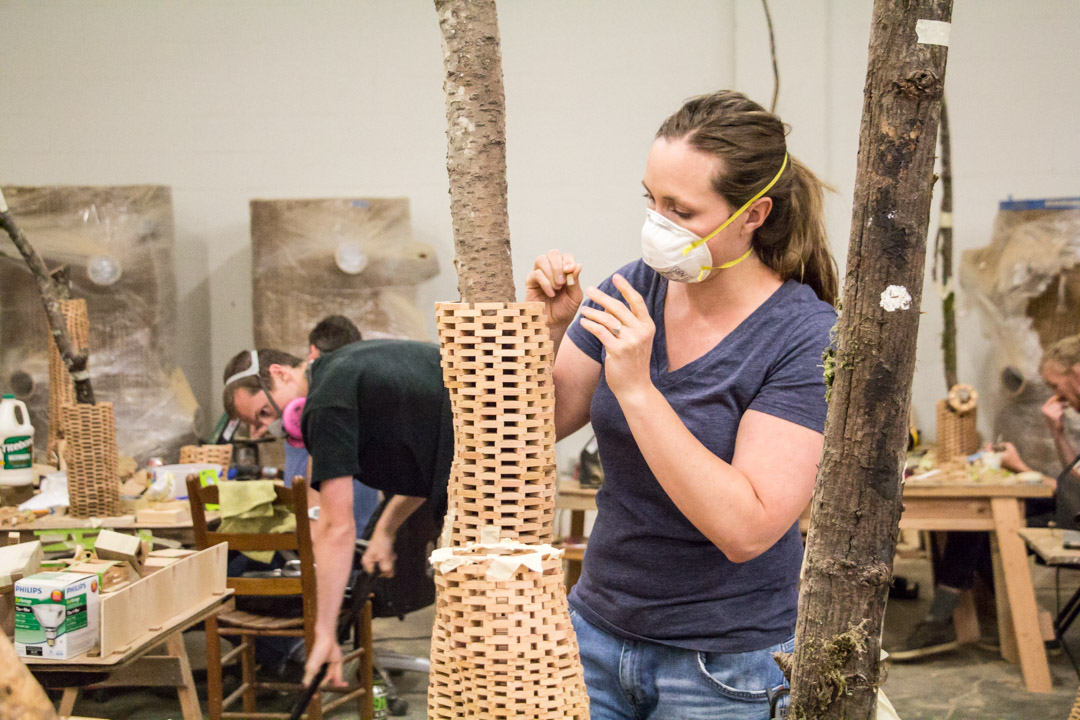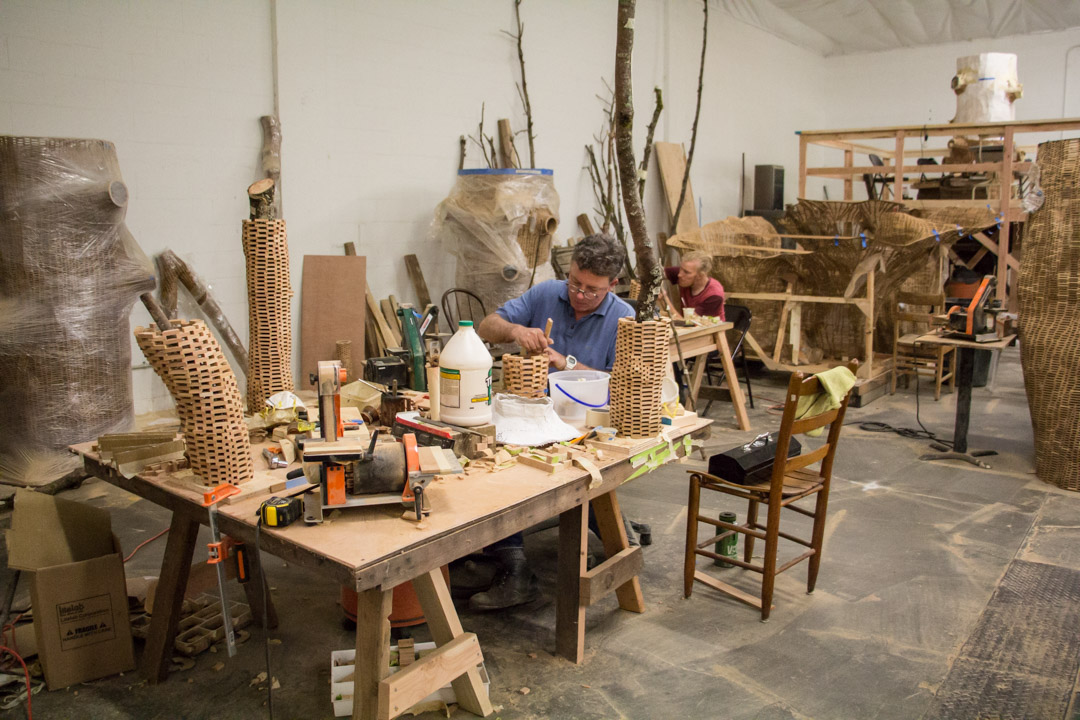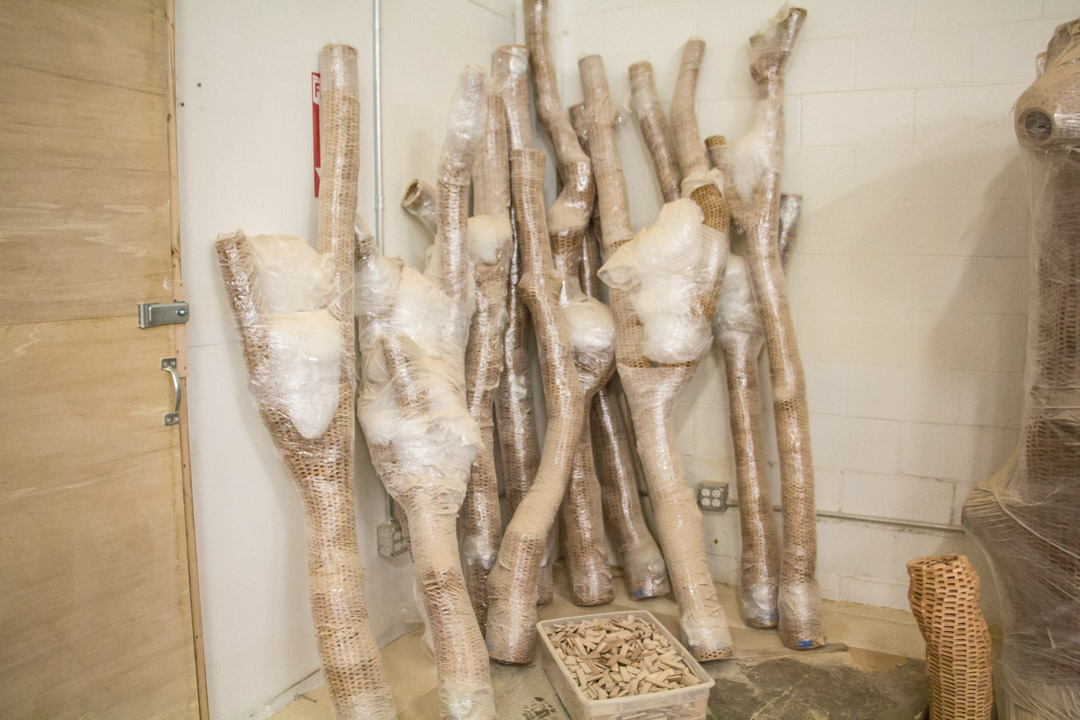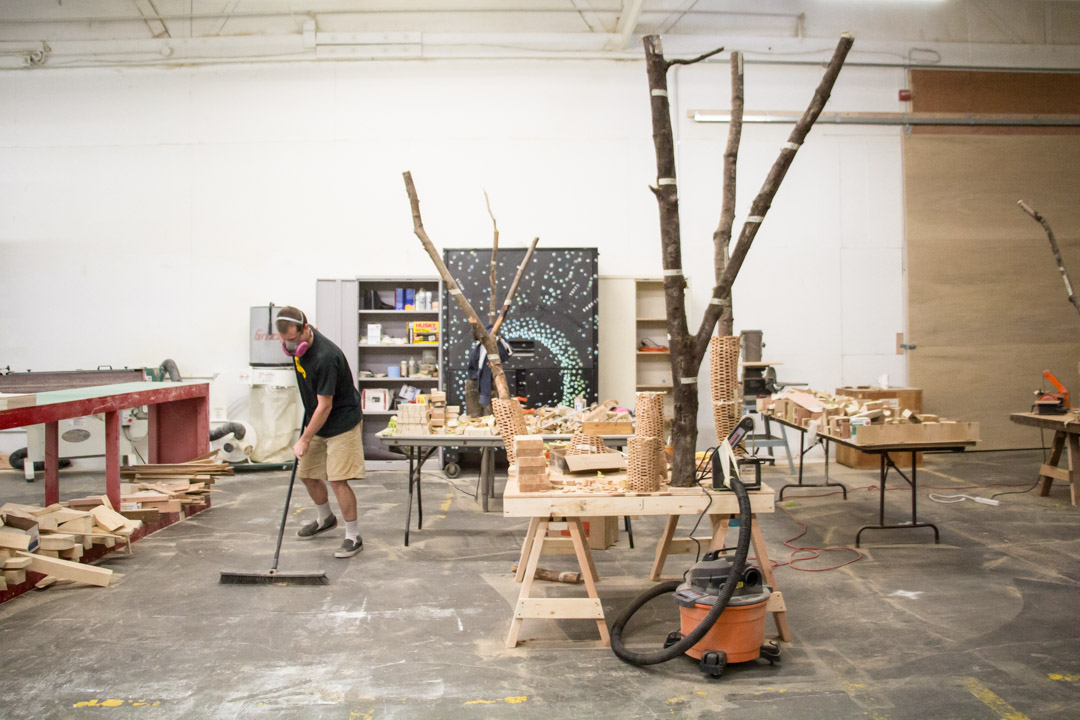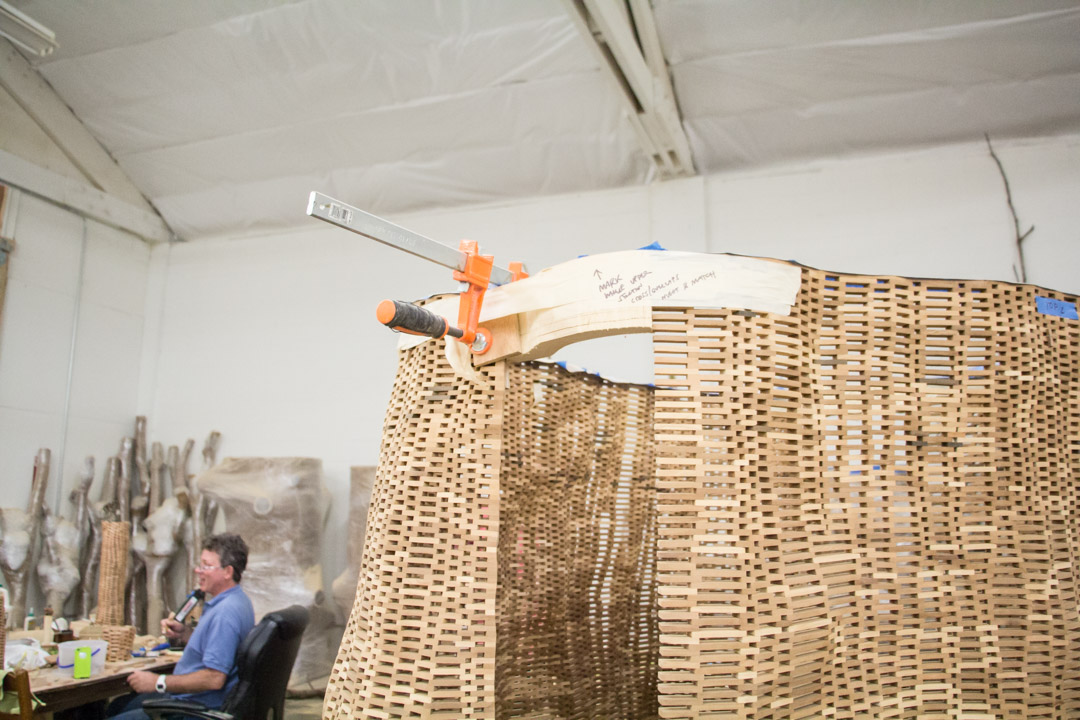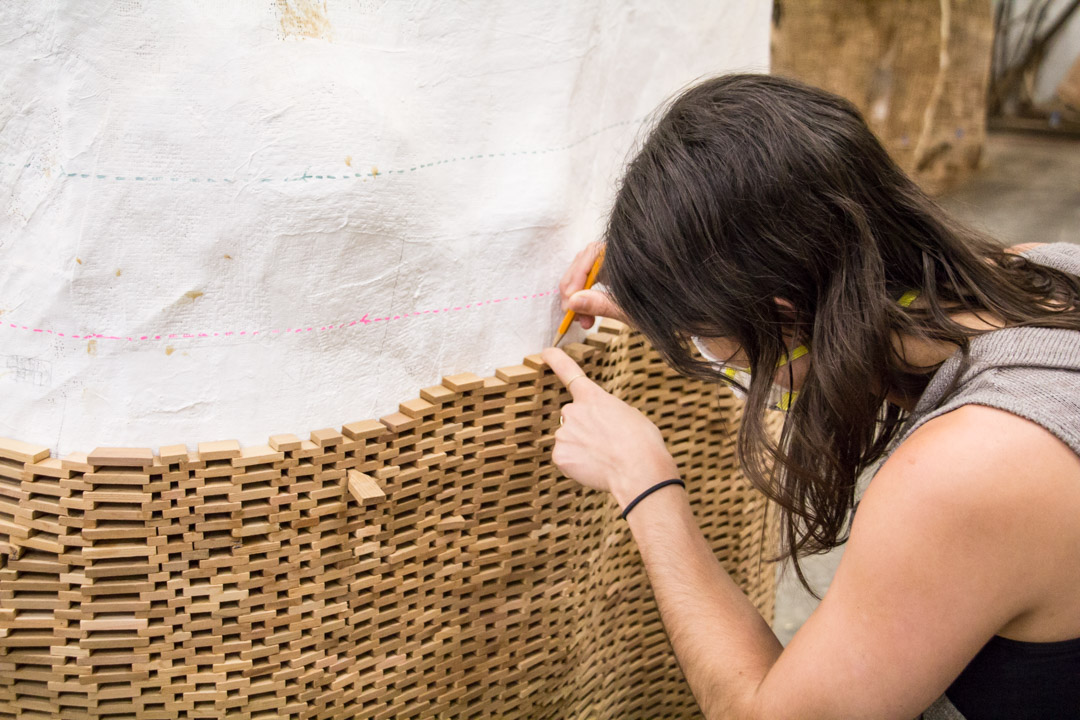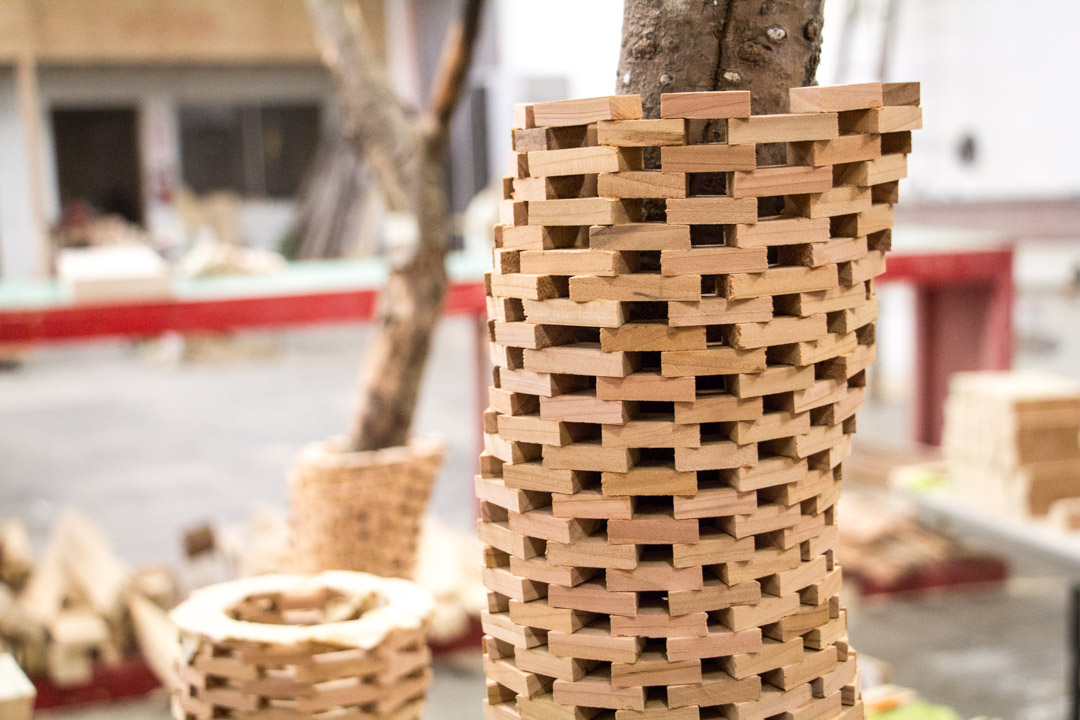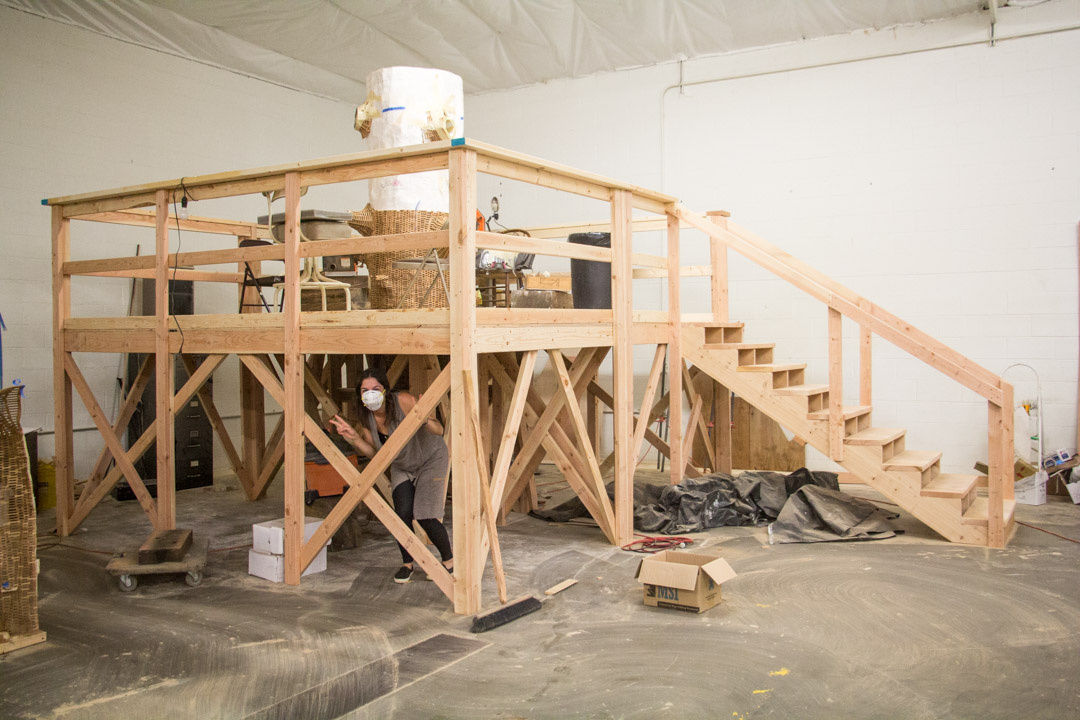“From Rooted to Airy”: Middle Fork Makes Way For FriendsWithYou Commission
After eight years on view and countless imaginations inspired, this week John Grade’s Middle Fork is being deinstalled from the Seattle Art Museum’s Brotman Forum. And that means something new will soon be taking residence in the soaring entrance lobby of the museum, which is a community space free to the public to enjoy without a ticket. Margo Vansynghel of The Seattle Times broke the news today that it will be a new commission from FriendsWithYou, the internationally celebrated LA-based duo of Samuel (Sam) Borkson and Arturo (Tury) Sandoval III. Little Cloud Sky (2025) will debut on June 27 and be on view for at least two years.
The new work is curated by José Carlos Diaz, SAM’s Susan Brotman Deputy Director for Art, who told Vansynghel that “the beauty of [FriendsWithYou’s] work is that it creates really uplifting atmospheres.” Little Cloud Sky (2025) is composed of 40 sculptures of the artists’ signature “Little Cloud” character, each custom made of plastic, four feet wide, and suspended from the ceiling of the Brotman Forum. The work is designed to spread positivity and inspire a sense of connection, encouraging museum visitors to reflect on the beauty of togetherness and the power of joy and nature. While versions of this interior skyscape have been displayed in cities around the world, including Las Vegas, Miami, Tokyo, and London, this is a brand-new iteration and the artists’ first long-term museum installation.
“Sam and Tury create Pop-inspired projects across the globe where visual joy takes center stage,” says Diaz. “We cannot wait to see our lofty entrance come to life with FriendsWithYou’s uplifting work that reminds us of the magic in public spaces and the boundless power of collective happiness. As visitors are captivated by the smiling clouds floating above their heads, we hope they will feel the sense of optimism in the atmosphere.”

The “Little Cloud” character serves as a symbol of peace and connectivity and can be found throughout the artists’ work. In August 2024, London’s Covent Garden featured Little Cloud World, an installation with 40 inflatable “Little Cloud” characters. In January 2024, Tokyo’s Yoyogi Park hosted an iteration of Little Cloud Sky, accompanied by a large-scale parade, “The Happy Dancing Rainbow Alliance,” featuring FriendsWithYou’s iconic characters.
FriendsWithYou’s work has been exhibited around the world. Their latest work, The BAND, an interactive performance-based installation featuring five large-scale autonomous robots, is currently on view at the Cleveland Public Library. In Miami Beach, the artists have a permanent public artwork 50-foot-tall sculpture titled Starchild, commissioned by The City of Miami Beach. FriendsWithYou has had recent projects in Covent Gardens in London, MOCA LA, the Telfair Museum in Savannah, the Dallas Contemporary as well as several gallery shows in Japan and Hong Kong.
– Rachel Eggers, SAM’s Associate Director of Public Relations
Photos: Arturo Sandoval III and Samuel Borkson in front of Little Cloud World in Covent Garden, 2024, Courtesy of FriendsWithYou. Rendering of “Little Cloud,” 2024, Courtesy of FriendsWithYou.
